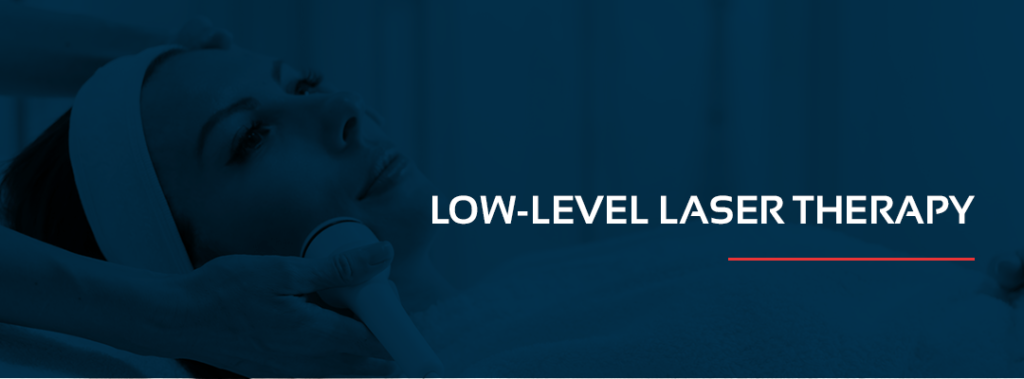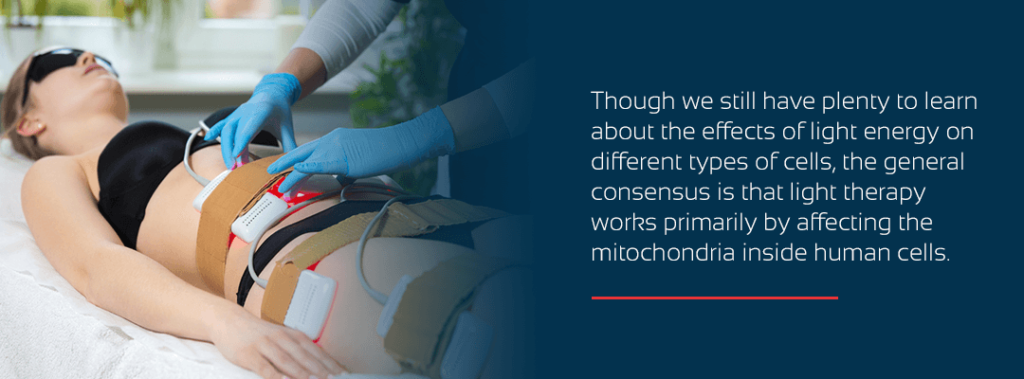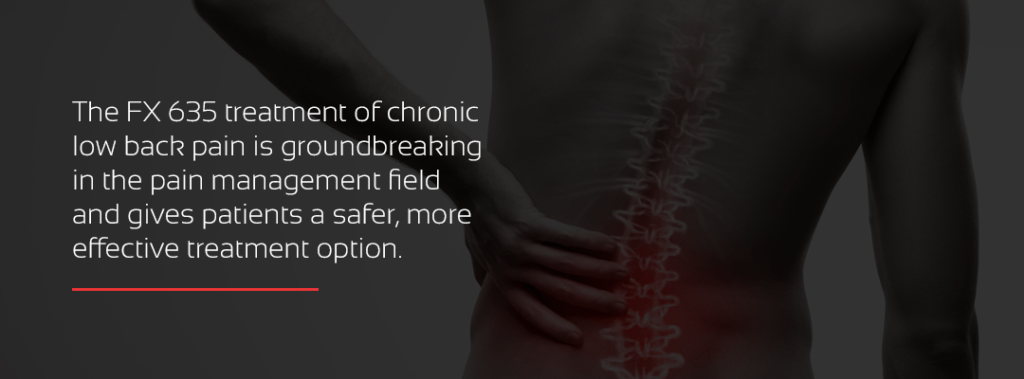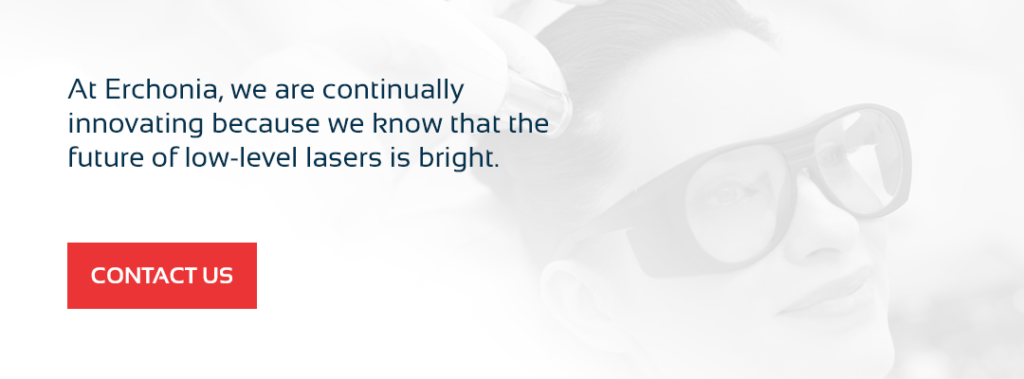The human body uses light-induced photochemical reactions on a daily basis. From the photosensitive cells in our eyes to the light-reliant vitamin D synthesis process in our skin, our bodies rely on and can use light in numerous ways. It stands to reason, then, that many cells in the human body may react to light. So how does light affect cells in the body, and how can it be used for the benefit of human health? That is the question behind the treatment method known as low-level laser therapy or photobiomodulation.

What Is Low-Level Laser Light Therapy?
Low-level laser therapy is known by several names. Most commonly, it is known as photobiomodulation therapy, low-power laser therapy, cold laser therapy or simply by the acronyms LLLT or PBMT.
Low-level laser therapy is a term that describes the therapeutic application of light to the body. First developed in 1967 by Endre Mester in Hungary, low-level laser therapy involves placing a light source near to or on the skin, allowing the photons to move through the tissue and interact with cells in the body. Mester first developed this method after finding that it improved hair growth and stimulated wound healing in mice. Shortly after his initial development of the treatment method, Mester explored the therapy’s ability to aid in the healing of skin ulcers in 1972.
Low-level laser treatment doesn’t involve the use of the high-powered lasers that most people are familiar with. Instead, low-level lasers, LEDs and broadband lights are used to emit red and near infra-red light with wavelengths of 632 nm to 1064 nm at 1 to 1000 mW. These low-power light sources do not generate heat, so they do not burn the skin during the therapeutic process.
Since the development of the process, the benefits of applying laser therapy treatments have been explored at length. The photochemical changes that occur in cells as a reaction to the application of light can help accelerate wound healing and tissue regeneration, increase circulation, reduce inflammation and even help manage pain.
How Does Laser Light Therapy Work?

While the benefits of photobiomodulation have been observed in medical studies, the mechanisms that lead to these results are still being studied. Though we still have plenty to learn about the effects of light energy on different types of cells, the general consensus is that light therapy works primarily by affecting the mitochondria inside human cells.
The primary idea behind photobiology is that when light hits certain molecules, called chromophores, the energy of the photon causes electrons in those molecules to be excited and jump into higher-energy orbits, effectively storing energy within the molecule. The mitochondria of the cell are thought to contain such chromophores, allowing them to store more energy to be used in the biochemical processes that mitochondria complete. Mitochondria then use this energy to increase the production of essential substances in the body. The most important of these are the following:
- Adenosine Triphosphate (ATP): ATP is functionally the energy storage molecule for the human body, used in virtually all of the biochemical processes that allow us to function. This includes processes that help our bodies to grow and heal.
- Reactive Oxygen Series (ROS): ROS is a mild oxidant that is essential in the gene transcription process, which is a critical part of cellular repair and healing.
- Nitric Oxide (NO): Nitric oxide is an essential molecule in the body’s cellular communication system, helping transmit signals through the body, which can help improve overall body healing. Nitric oxide is also helpful in dilating blood vessels to improve circulation.
Several other mechanisms are likely improved through the use of laser therapy. For example, NO improves the production of cyclic guanine monophosphate, which is involved in other signaling pathways in the body. Laser therapy also improves the synthesis of DNA and RNA, which in turn promotes the production of proteins and growth factors in the body.
Laser Therapy Benefits
The biological processes promoted by laser therapy result in various health benefits to users, each of which has been studied at length. A few of the benefits of laser therapy are discussed in detail below:
1. Pain Reduction
Pain is the most common reason that people see doctors in the United States, with one in three Americans affected by chronic pain each year. Low-level laser treatment has been explored in various studies as a method of decreasing several types of pain, including the following:
- Orthopedic pain: Low-level light therapy has had pain-reducing effects on patients recovering from sprains, whiplash, muscular pain, cervical or lumbar radiculopathy, tendinitis and carpal tunnel syndrome. It has also shown positive effects on individuals with chronic conditions like arthritis and osteoarthritis. It’s may even bee effective at treating post-surgical pain, and one study showed that low-level light therapy was an effective tool in managing pain for patients recovering from total hip arthroplasty surgeries.
Laser therapy treatment has also been effective in managing pain for athletes recovering from training or injuries It is thought that the reason low-level laser therapy is so effective is that it stimulates the nerve endings of nociceptors, or pain receptors, that lie close to the skin.
2. Fat Reduction
Multiple studies have been conducted to determine whether low-level laser treatment can be used for fat reduction with positive results overall. One review found that laser therapy is effective at reducing fat and cellulite and improving blood lipid profiles with little to no side effects. The current theory as to why laser therapy is so effective in this area is that laser therapy helps induce adipocyte apoptosis, releasing stored fat from the body.
3. Inflammation Management
Laser therapy treatment has been widely regarded as an effective way to manage and reduce inflammation in a variety of applications. Athletic programs commonly use low-light laser therapy to help reduce inflammation and promote muscle recovery for training or injured athletes. Additionally, medical practices have used laser therapy as a way to manage inflammation for patients recovering from various injuries. One study showed that low-level light therapy effectively reduced post-surgery inflammation for patients recovering from total hip arthroplasty surgeries.
The primary mechanism by which light therapy helps reduce inflammation is vasodilation. In vasodilation, small arteries and lymph vessels increase in size, allowing inflammation, swelling and edema to move away from injury sites. Not only does this mechanism reduce inflammation, but it also improves the healing process overall.
Low-Level Laser Application Areas
While laser therapy has numerous potential benefits that are still being researched, several practical applications are already on the market. Below are a few of the more common laser applications in which Erchonia Corporation lasers specializes:
1. Chronic Low Back Pain
About 80% of adults experience low back pain at some point in their lives. Of those adults, approximately 60% are treated with opioids, despite the potential for addiction and the minimal value of opioids in long-term applications. Erchonia’s FX 635 laser showed a 72% success rate in their clinical trial, which received FDA market clearance in May 2018. The FX 635 treatment of chronic low back pain is groundbreaking in the pain management field and gives patients a safer, more effective treatment option.

2. Neck and Shoulder Pain
Various low-level lasers have been shown to be effective in reducing and eliminating acute and chronic neck and shoulder pain. Many patients find that low-level lasers are more effective and work faster than traditional pain medications. Combined with physical therapy and chiropractic treatments, Erchonia lasers can help patients live a normal, healthy, active life without debilitating pain.
3. Body Contouring
Erchonia lasers are proven to target and eliminate fat in areas that are difficult to reduce with regular diet and exercise. The Zerona laser is proven to stimulate the body at a cellular level, targeting these difficult areas.
The Erchonia EML laser is approved as an addition to traditional liposuction surgery. It is the first and only low-level laser to be given FDA market clearance for use before and during liposuction treatments. The painless laser treatment is applied before liposuction to liquefy the fat, making it easier to remove during the surgery. In addition to improving surgery outcomes, the application of this low-level laser has been shown to reduce post-operative pain and bruising and decrease overall recovery time.
Do Low-Level Lasers Actually Work?
Though low-level laser treatment is a relatively new field of medicine, the results speak for themselves. As the studies mentioned above show, patients recovering from injuries, surgeries and more can expect excellent results from low-level laser therapy, and people looking to improve their hair, skin and pain outcomes already have options available to them.
It is important to note, however, that low-level laser treatments may not be the best option for everyone. Pregnant women, for example, are not recommended to pursue laser therapy treatments since the effects on fetuses are not well understood. Results may also vary per person — the number of treatments needed may vary depending on the condition, the severity of this condition and the patient’s response to treatment.
Despite it being a relatively new field of study, cold lasers are still being studied at length for their potential benefits. Laser therapy applications are currently being studied for use against viruses, scars, burns, wound healing and much more. With each new revelation, Erchonia will be there. Our commitment to low-level laser treatment has made great advancements for laser technology that patients can use right now.
Choose Erchonia for Low-Level Lasers
At Erchonia, our mission statement is simply “Quality Not Compromise.” This mission is ingrained in every aspect of our business, from our unwavering belief in the benefits of low-level lasers to the quality of our devices and components. We care about our products, our clients and the patients that we help. We care enough to conduct extensive research, carefully manage our manufacturing and assembly processes and put our products through extensive clinical trials, all to make sure that our products are proven to be safe and effective. At Erchonia, we are continually innovating because we know that the future of low-level lasers is bright.
Contact Erchonia today if you are interested in receiving treatment or providing treatment at your medical practice.

